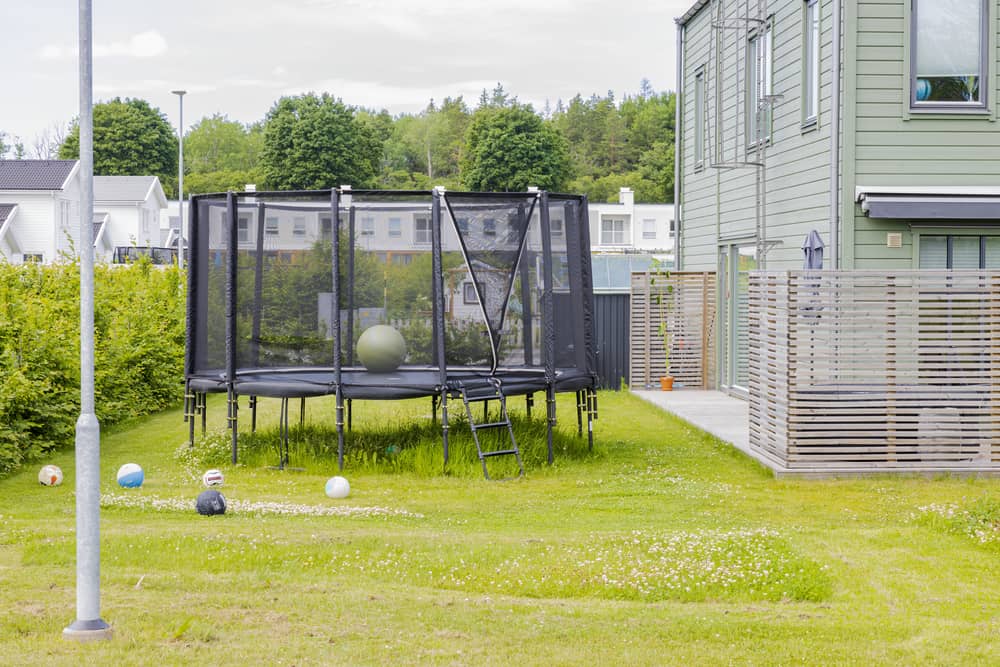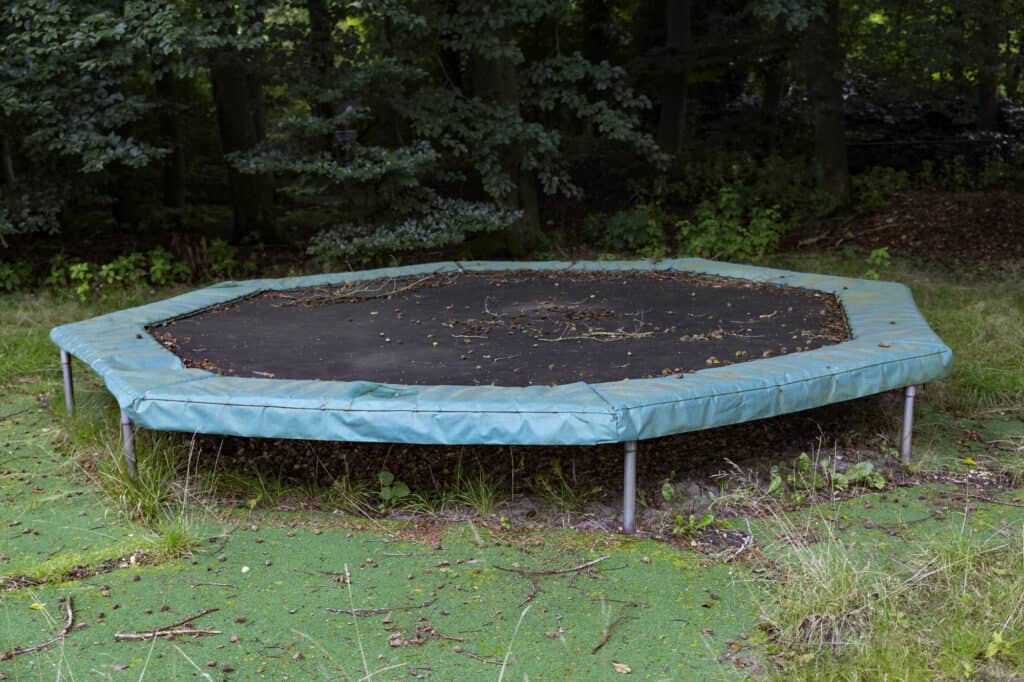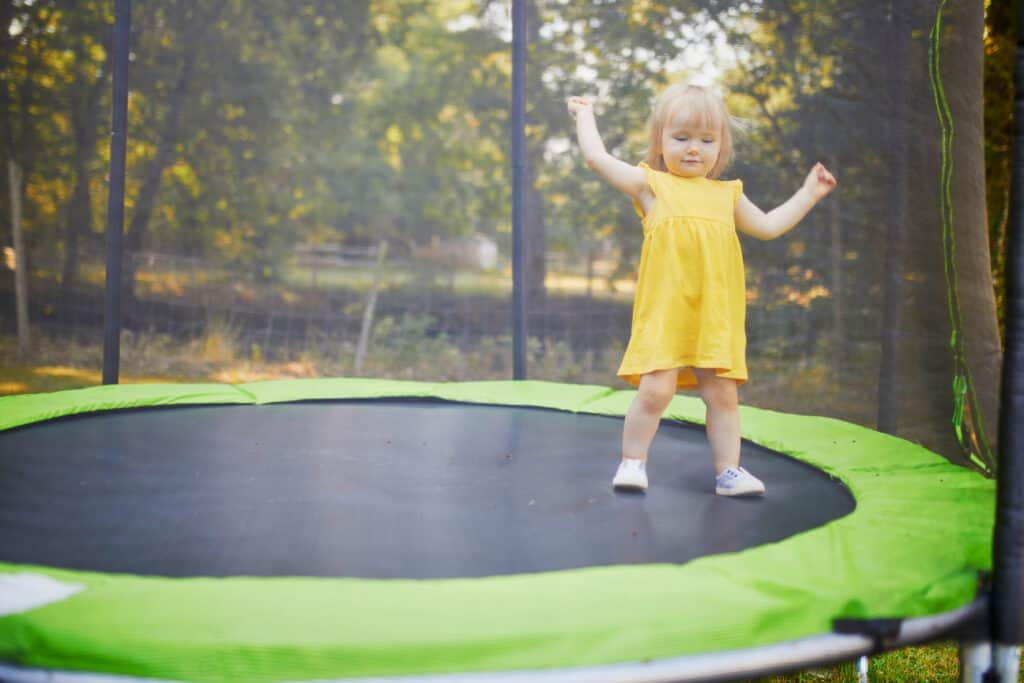Who doesn’t love trampolines? They’re a source of fun, fitness, family bonding and never fail to keep our times light. So, don’t they deserve to get some attention and care in return with all that in mind?
Maintaining this bouncy pad of joy isn’t the easiest thing in the world, but if you’ve already bought something that isn’t cheap, you probably expect it to last long, and that’s why proper trampoline care is so important!
In this article, we share some vital tips on placing your trampoline at home, protecting it, using it properly, cleaning it, and much more, so keep on reading!
Why Trampoline Care & Maintenance are Important

There are a couple of reasons you should take care of your tramp:
● Long-Term Investment
Trampoline care is an excellent investment of your time and money when it comes to entertaining your family. Instead of only spending money on theme parks, cinemas, museums, and so on, you can spend a lot less making sure your trampoline stays in one piece, and there you go!
Your family can have tons of fun at home too!
● Fun and Safe Environment for Your Kids
Trampoline maintenance provides your kids a safe environment to enjoy themselves in, without worrying about them getting hurt if the trampoline suddenly breaks.
● Continuous Care is Cost-Effective
We can all agree that the most expensive part of having a trampoline is buying it. Other simple things like cleaning the jumping surface and replacing pads with new ones are much cheaper, but they’re a game-changer if you want to keep your trampoline for the longest time possible!
Proper Placement
The proper placement is crucial when it comes to maintaining a trampoline. Here’s what you have to make your trampoline last longer:
- Find an area that is clear and flat (no trees, fences, washing lines, etc.). Or consider installing an in-ground trampoline.
- Sunlight is one of the biggest threats to your trampoline. Make sure to find a shady area to place it in.
- Never place a trampoline on concrete, tarmac, or any hard surface without having the safety net in place.
- A perfect ground for a trampoline is soft and energy-absorbing, such as sand, grass, and bark.
- Make a safe fall zone of 3-8 feet around the outside of the tramp.
Protecting Your Trampoline against the Weather
Before you close your doors and cozy up in the colder months, remember that your trampoline also needs special care and attention in cold weather.
So, what should you do to maintain your trampoline in extreme weather conditions (wind, storm, rain, snow)? Check out these life-saving, or should we say trampoline saving, protection measures below!
- Use a trampoline tie-down kit to keep it from blowing over in strong winds. It’s unnecessary to keep it there forever, but we highly recommend that you use it whenever the winds pick up.
- And for a faster solution, sandbags are your best friend. They’ll add extra weight to lighter trampolines, which will (in most cases) prevent the trampoline from moving in high winds.

- Buy some protective padding to add protection to your trampoline and prevent rust.
- To protect the trampoline frame from humidity, add protective tubing to keep the rain from accumulating on the jumping mat.
- It’s never a good idea to keep your trampoline covered in snow as the weight of the snow can eventually stretch the springs. Regularly brush all the snow out whenever it builds upon the trampoline, and don’t use a heated blower or a shovel.
- Remove the framing pads and store them inside to prevent any possible damage from rain and snow. If you choose not to remove them, make sure to cover them with a weather cover.
Bonus Tip#1: Trampoline Care during Hot Weather
- Prevent sun damage from reaching your trampoline by simply moving it to a shady spot in your backyard around midday.
- For additional UV shielding, go ahead and slip on a trampoline shade cover.
Bonus Tip #2: Preparing Trampoline for High Wind
- During high winds, it can blow away the trampoline, therefore, move the trampoline and enclosure to a sheltered location. Remove the enclosure netting from the trampoline and anchor the frame with ropes and stakes.
- Do not anchor the legs or the bases to the ground, as this will allow the ropes to separate from the frame sockets. Secure the strings to the top of the trampoline frame: do not secure them to the legs or the bases.
- To prevent tripping hazards, stakes should have the tops at ground level. Also, you should cover the tops of the stakes if necessary to protect users from falling against them.
Protection Against Animals
No matter how cute you think they are, animals can mess up, scratch, play on, and hide underneath your trampoline. Whatever the case is, when no one’s using the trampoline, make sure its safety enclosure is closed to keep any animals from damaging it.
Cover your jumping mat with a protective cover or tarpaulin whenever you take down the premium frame pad to keep your pets or any wild animals from playing with it.
Appropriate Trampoline Use
Whether it leads to serious injuries or not, misusing your trampoline is the last thing you want to do because it can be disastrous.
Three main things to keep in mind (and teach your kids) about using trampoline:
- Never let them do flips or somersaults, and stop your kids if you see them jumping too high.
- The center of the trampoline should be the place you jump on. Try not to jump along the edges.
- Teach your kids never to jump off the trampoline. Instead, tell them to walk to the edges, carefully sit down, and simply slide off.
Weight Limit

The weight limit of a trampoline depends on several elements, including the frames, springs, jumping pads, and of course, the size of the trampoline itself.
These are the usual weight limits that you have to know before your family can use it:
- The maximum weight limit considering most rectangular trampolines ranges from 300 to 500lbs
- Trampolines with a round shape handle weighing between 200 to 350lbs
- The maximum weight limit in large oval trampolines is usually 500lbs
Crucial Checks For Trampoline Safety
Checks are extremely important to not only extend the life of your trampoline, but it’s also important for the safety of your loved ones. Always make sure of the following things:
- The pads are not torn and are well-secured to frame
- The jumping bed has no broken webbing or loose stitching
- There are no broken anchor bars or missing springs
- The hooks of the spring are pointing down
- Chains in the leg section are tight
- All equipment is in place and level
- The allen screws in the leg brace are tight
- Castors are tight and turn smoothly
- Turnbuckles on chains are neither distorted nor tight
How to Properly Clean Your Trampoline?
No matter how often you use your tramp, you want to make sure you clean it regularly. If it’s in use every single day, cleaning it once or twice a month is what you want to do.
However, if you only use it occasionally, it’s a good idea to clean it once every two months.
Here are the basic trampoline cleaning rules you should know:
- Sweeping – Use a long brush to sweep the dirt off the trampoline mat. If your trampoline has springs, let someone help you by holding up the rim mat covering the springs and sweep the debris off through them.
- Soaking – A hose would be great to give the mat a good soak.
- Scrubbing – Prepare a soft brush and warm soapy water, and scrub your trampoline gently, so you don’t damage the material. You’re free to work in sections, then stop to rinse, or to scrub off the whole mat then rinse.
- Rinsing – Use your hose to easily rinse off all of the excess soap on the mat.
- Drying – At first, use towels to dry the mat partially, then you can leave it uncovered to dry.
- Cleaning Trampoline Springs – Now that your mat is all set and clean, start cleaning the protective pads and springs (scrub them down with warm soapy water).
As for the ideal time to clean your trampoline, it’s best to clean it during a sunny day so it can dry off quickly.
Final Words
Maintaining a trampoline takes a lot of effort, for sure. But at the end of the day, it’s one of the best long-term investments you can make to put a smile on your kids’ faces throughout their childhoods. So, it’s totally worth it!
